TsKB-55, or BSh-2
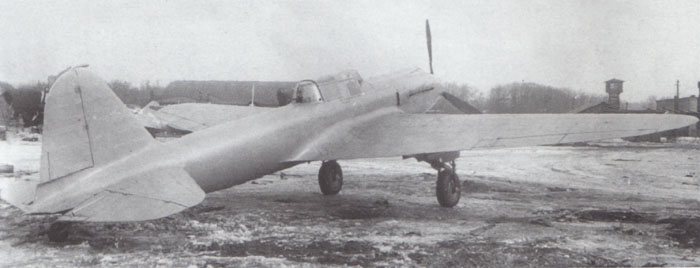
The TsKB-55 had a streamlined fuselage whose aft and central part were made of an high tensile armour steel stressed skin that contained the engine, the tanks, the coolers and the cockpit.
The rear fuselage and fin were made of wood, while the wings and stabilizators were made in aluminium alloy; the control surfaces were fabric skinned.
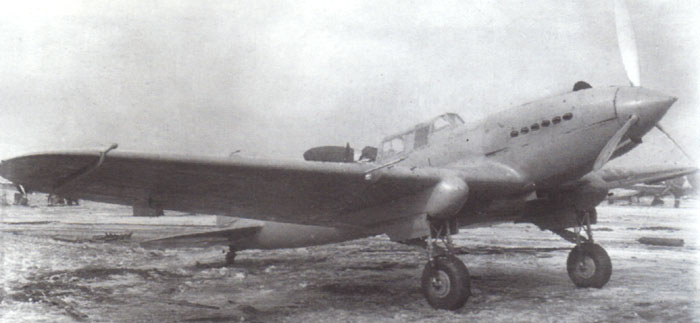
The plane was armed with 4 ShKAS machine guns in the wings and one more in the rear defensive position; it was able to carry 400 kg of bombs in four bays in the wingroots.
The wheels were protruding when retracted, protecting the plane in case of a belly landing.
The ailerons were balanced with weight put on the leading edge, close to the tips.
At first, the radiator and oil cooler were located behind the engine, receiving fresh air from a dorsal intake and discharging it below the fuselage.
The prototypes revealed problems particularly in the cooling system, that was repeatedly changed: at the end, the water cooler remained in the oblique tunnel, while the oil cooler was placed in a separate armoured housing under the fuselage.
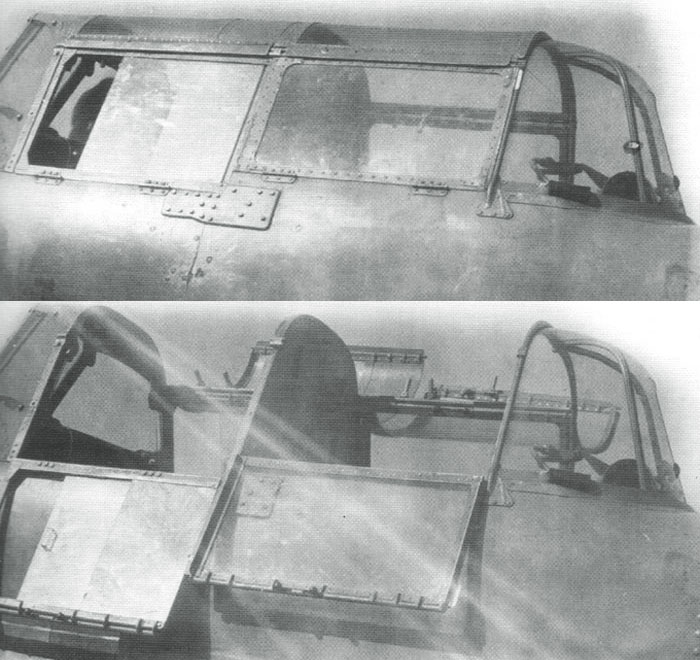
The cockpit and canopy are resembling to those of the later Il-10.
The windshield was made of armorglass, while other glazing is made of simple plexiglas, but with two steel plates aside the pilot and an armour behind him.
Both the pilot and the gunner were protected into the steel aft fuselage.
The rear glazing was rotating with the defensive ShKAS , giving a good field of fire. When the turret was angulated, part of the glazing opened on the opposite side.
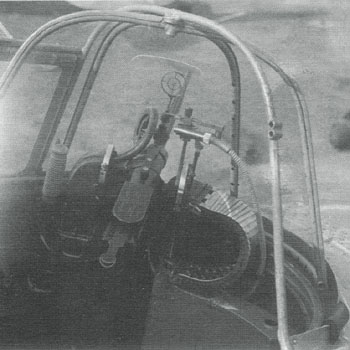
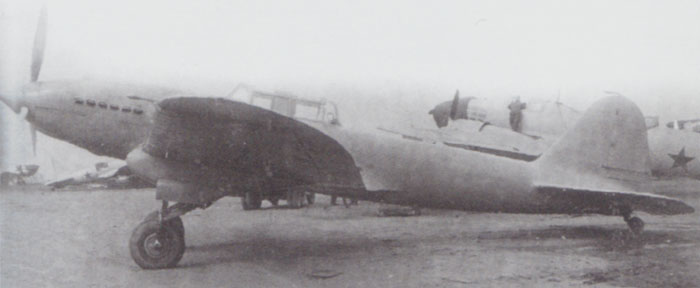

The factory tests were completed on 26 March 1940, and the second prototype was delivered to the NII VVS (Scientific Institute of the Air Force) for state tests.
The conclusion was generally favourable to the production of the plane, but some shortcomings were put in evidence:
- the plane was slower than the specifications (362 km/h instead of 385-400),
- higher landing speed and takeoff run,
- unsufficient visibility due to the long nose.
- manoeuvrability and stability were unsatisfactory.
The stability was to be improved by enlarging the horizontal tail surfaces, and moving the centre of gravity forward.
Mikulin developed a low-altitude derivative of the AM-35, the AM-38, that was without supercharger and gave an higher power at ground level. The new engine was installed on the TsKB-55.
TsKB-57
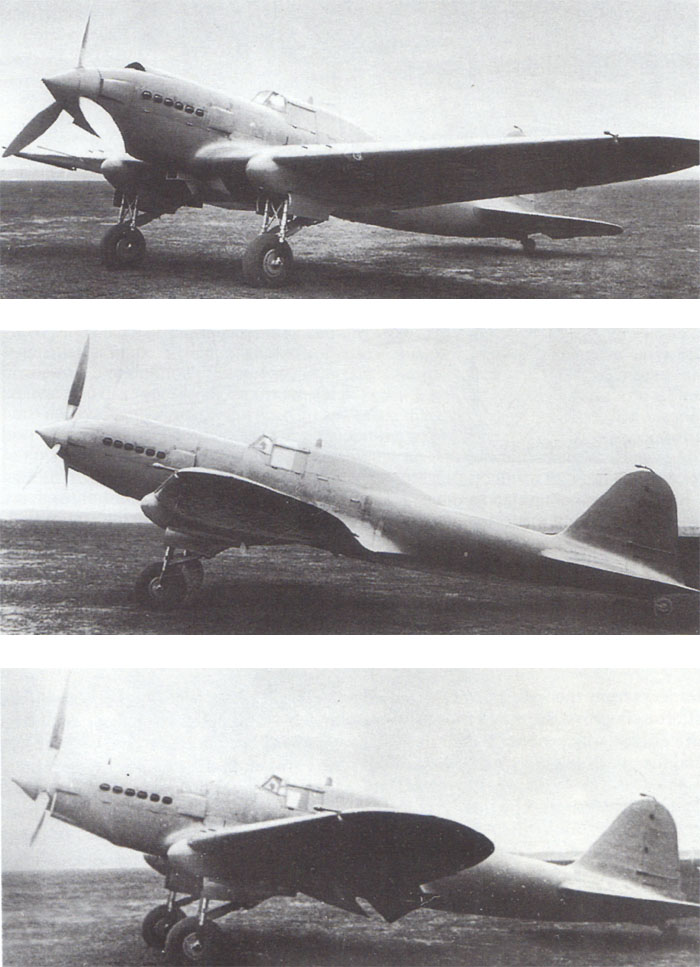
The first prototypeTsKB-55 n.1 was deeply modified to try to meet the requirements:
- it was converted into a singleseater to try to save weight and drag and increase the speed;
- instead of the gunner's cockpit, a further fuel tank was installed behind the pilot's seat.
- the engine was replaced by the AM-38.
Besides, to improve stability:
- its engine was moved forward by 50 mm for CG reasons, making the nose longer;
- its stabilizator area was enlarged by 3.1%;
- the outer wing panels were swept back of further 5°.
The modified plane was named TsKB-57.
The TsKB-57 was first flown on October 1940, reaching a satisfactory speed of 423 kn/h at ground level; its range with 400 kg bombs load was increased to 850 km thanks to the additional reat tank. The plane offered better handling characteristics than the TsKB-55.
TsKB-55P
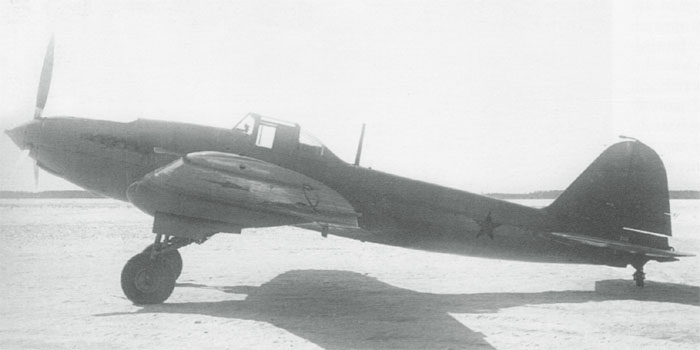
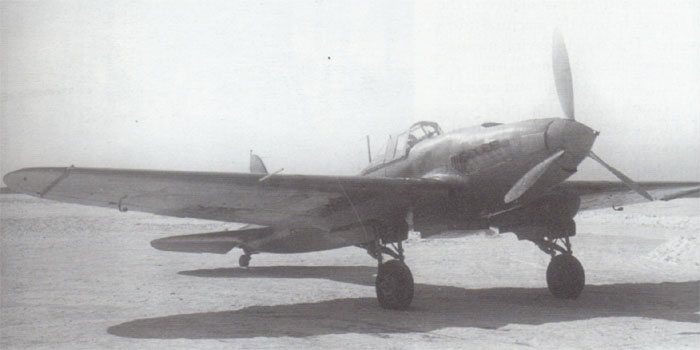
According to some informations, the TsKB-55P (P perhaps is for pushechnyi: cannon armed) was obtainded by the conversion of the TsKB-55 n.2; anyway, the differences were so extended that it's likely that the plane was completely new.
The differences were:
- the engine, an AM-38, was lowered by 175 mm for improve visibility and moved 50 mm aft for cg reasons;
- the pilot's seat and canopy were raised by 50 mm;
- an armorglass and a short trasparent cowl were mounted behind the pilot;
- the wing outer panels received a further 5°sweep as on TsKB-57;
- the plane was armed with 2 20 mm ShVAK guns and 2 ShKAS machine guns in the wings;
- the stabilizers were enlarged as on TsKB-57;
- the thickness of armour was increased;
- a further fuel tank was installed behind the pilot, as on TsKB-57;
- the intake of carburettor was moved to the right wingroot;
- a PBP-1 gunsight was installed;
- the plane was provided with a gun camera;
- the first 5 exhaust pipes on each side were protruding and bended rearwards, while the last ones were shorter.
So, the look of the plane has to be very similar to the production Il-2s.
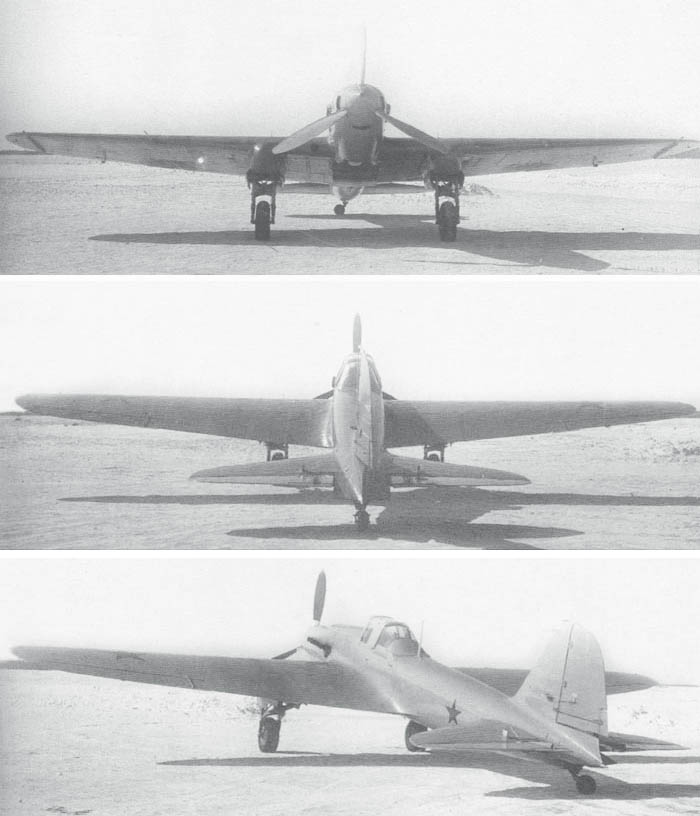
Some books propose photos of Il-2s of mid 1941 as those of the Il-2P; this is probably wrong.
Between available photos of Il-2, the most likely tributable to the TsKB-55P are those relative to a plane that differs from typical production Il-2s only for its uniform painting, probably light grey, and the lack of protection plates on the grilles behind the exhaust stacks. This plane is decribed as a pre-production Il-2, but it is much more credible as the Il-2 prototype than the other photos that were proposed.
About its painting, this plane was described as light green overall, but this doesn't look credible; probably it's light grey (AE-9 and AII light grey) as the other prototypes and SB bombers; it appears dark only in contrast to the snowy background.
The factory testing of this plane was slow; without waiting the end of the tests, the NKAP ordered the starting of production of the plane in four plants: Zavod 18 of Voronezh, Zavod 35 of Smolensk, Zavod 380 and 381 in Leningrad.
Only Z.18 (the 'chief' plant) and Z.381 started effectively the production before the war's outbreak.
Il-2M-82
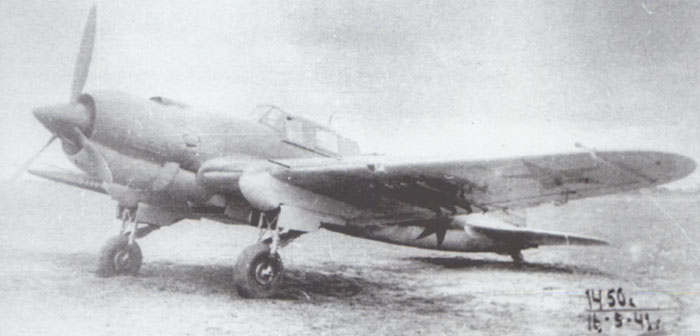
To say it with Stalin's words, the Il-2 was as necessary to the Red Army as breed was.
To allow its production in case of scarcity of AM-38 engines, designers projected a variant powered by the powerful radial engine M-82 of Shvetsov. This engine was available in quantity, powerful and less vulnerable than water-cooled engines.
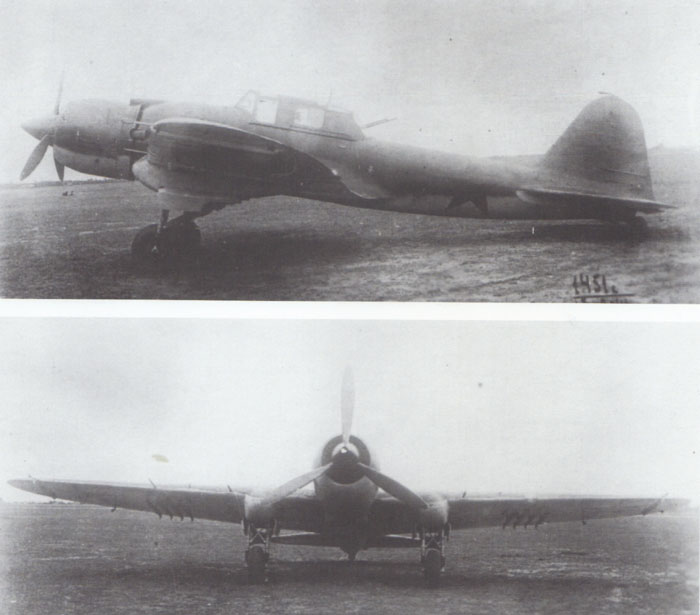
The prototype of this variant was obtained from a production plane in mid 1941, and made its first flight in September.
The front fuselage was cutten and rebuilt, allowing the installation of the unarmored radial engine.
The plane was transformed into a twoseater, replacing the rear tank with a gunner's cockpit housing an UBT.
The wing was typical of 1941, metallic with two ShVAK and two ShKAS and eight rocket rails as on singleseaters.
The plane had somewhat lower flight characteristics than the usual AM-38 powered version, with a speed of 382 km/h to the sea level.
The plane was tested by the NII VS in February and March 1942, and considered acceptable for the prooduction.
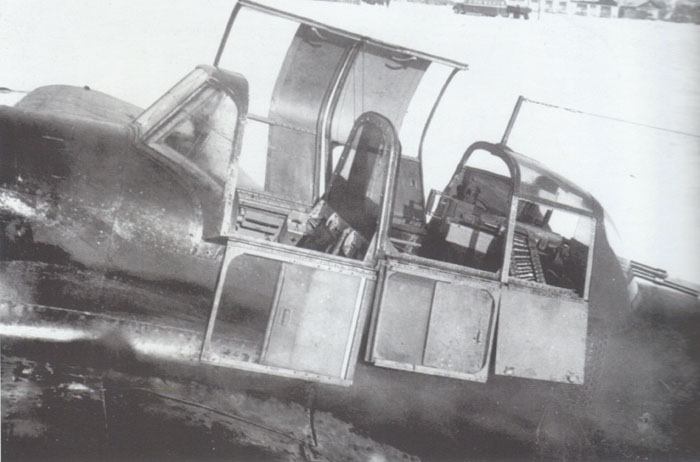
A noteworty detail of the canopy and cockpit.
The sliding hood was discarded in favour of hinged panels, protected by steel armours and by internal armorglasses at the sides of the UB machine gun.
An armour with two armorglass windows separed the pilot from the gunner.
The protecton and comfort of the gunner look good, but his visibility and field of fire were limited.
The image is of the prototype of the Il-2M-82IR, recognizable for some more armour plates than the Il-2M-82.
Il-2M-82IR
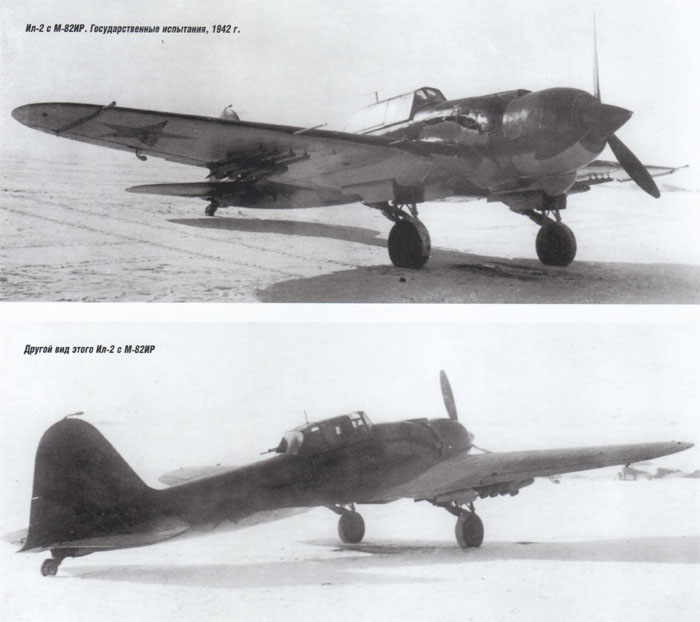
A second prototype was equipped with a M-82IR engine optimized for low altitude flight. The new prototype had some armour on the lower side of the engine cowling, and some more on the sides of the gunner's canopy.
In contrast with the previous prototype, this one was camouflaged in green and black according to a non-standard pattern
A project to build hundreds of Il-2M-82 in Zavod 381 and 135 was abandoned in April 1942 because the production of AM-358 was stabilized, and the M-82 was necessary to the new La-5 fighters.
Besides, the installation of the gunner's cockpit required the deletion of the fuel tank behind the pilot; the only other way to acconodate substitutive fuel tanks was in the inner couple of bomb bays, weakening the combat capabilities of the plane.
After the version with M-82, it was projected an Il-2 equipped with the even larger and more powerful M-71 radial engine.
This plane was intended as a single seater, to avoid the loss of bombs load.
It was abandoned also because of the problems of reliability of this engine, that was never mass produced.
Il-2bis
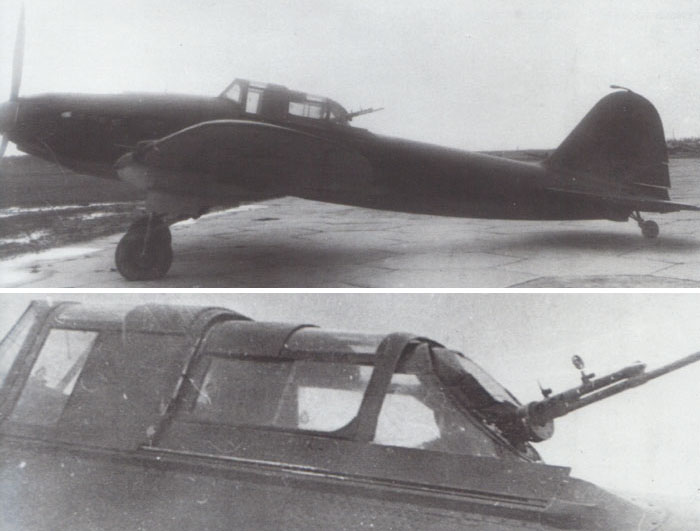
After abandoned the Il-2M-82, there was still the need for a two-seater version with rear gunner.
The Il-2bis was developed at Zavod 1 in the second half of 1942, in parallel with the less radically modified prototypes armed with ShKAS or UB.
The plane c/n 4434 had a fully armoured gunner's cockpit, protected by armour plates from above and a semicircular armorglass in the rear glazing.
No any aerial mast is visible, but we see a VV-1 external aiming device on the nose.
A detail of the canopy.
Two sections slided backwards, one inside the other, on elongated guides. Leaving the plane wasn't so easy.
The UB had a semicircular armorglass and some armour on the upper side and on the rear, under the bended plexiglass panels of the 'blister'. A small cylindrical hood is visible on the gun.
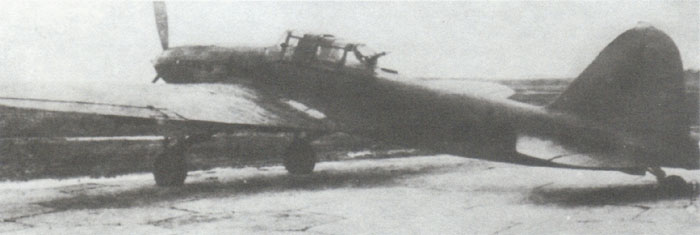
The wing armament included 8 rocket rails, two 20 mm ShVAK guns and two ShKAS machine guns into the wooden outer wing consoles.
The rear fuselage tank was deleted, and relocated into the inner bomb bays; so the internal bomb load was reduced from 400 kg to 200.
This reduction of the bomb load, aside with the reduced field of fire and the extension of the modifications to the fuel system, let to abandon this version, preferring the simpler arrangement that was later known as Il-2M.
Il-2 with UTK-1 turret
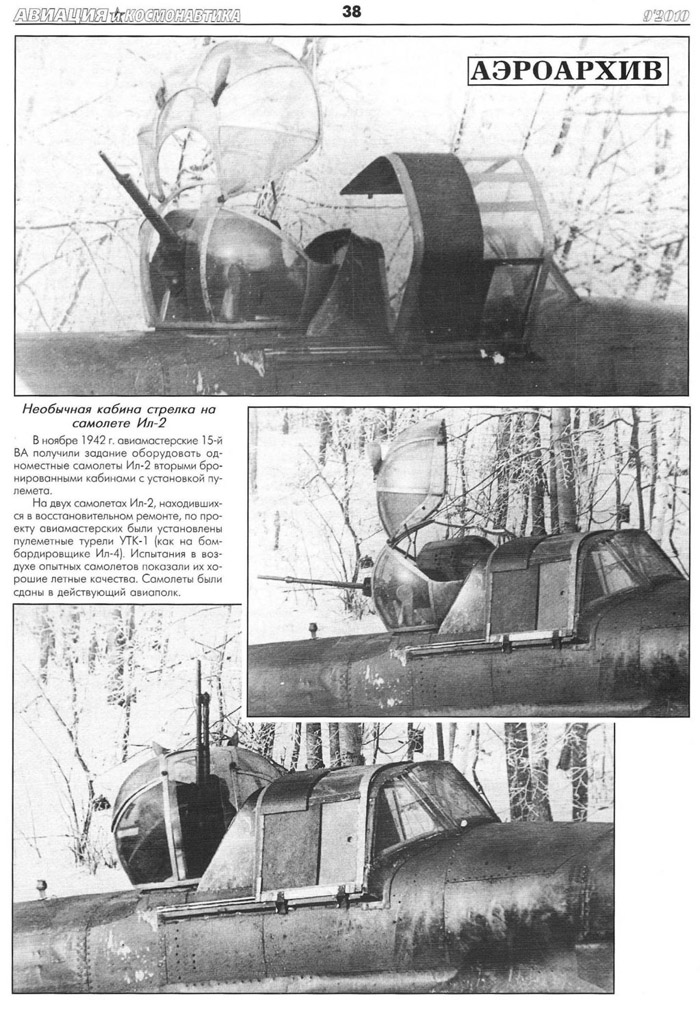
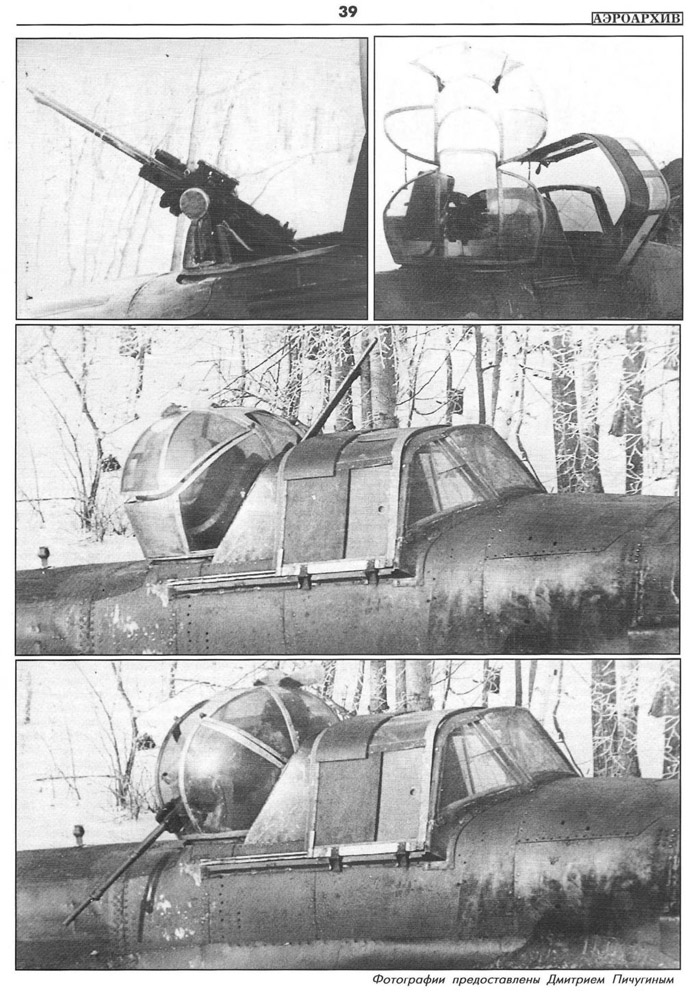
The installation of a UTK-1 turret was experienced in May 1943, when the two-seater Il-2 with UB installation were already in production, to increase the field of fire of the gunner.
As one can see, it's the same type of turret of Il-4s and LI-2s; the UBT gun was different from the UB installed on traditional twoseaters Il-2s, because the gas recovery manifold was aside the barrel instead of over it. One can see the large ammo box with rounded corners on the right side of the gunner's position.
This turret was installed as close as possible to the pilot's canopy, that was modified to be hinged on its right side instead of sliding rearwards; apparently, this required the suppression of the fuel tank behind the pilot.
In the photo, the radio mast appears suppressed, or perhaps replaced by the small object protruding on the rear fuselage.
The rear fuselage itself seems metallic, suggesting that the conversion work was made on an already old plane of 1941.
Despite the good field of fire, the installation was not chosen for production, probably due to the increasing in drag and to the necessity to relocate the fuel tank.
Scans from Aviacia i Kosmonautika






